One of the best things about Christopher Nolan's Batman trilogy is how realistic he makes the caped crusader feel. Unlike the Joel Schumacher or even the Tim Burton versions, Nolan's world seems grounded in some level of scientific fact. But just how close is science to actually being able to replicate some of the Dark Knight's gadgetry?
The Cape
In the movies, Batman's cape is made of a fictional material called "memory cloth," which uses an electrical charge to make the cape stiffen to allow for gliding, and then return to a more fabric-like state. The gliding ability of wingsuits are already a real thing. The trick is getting that awesome cape-to-glider transition.
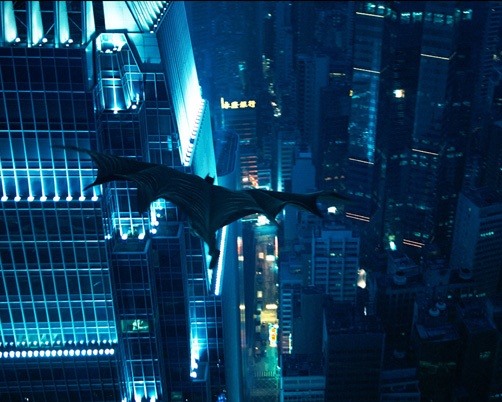
Sadly, it looks like this one is closer to an invention of Mr. Nolan's imagination than actual science at this point. That isn't to say that researchers aren't working around the clock to make your Bat-dreams come true. The film crew working on the Batman costume actually got some help from the British Ministry of Defense, who instructed the costumers on a technique called "electrostatic flocking." The cape was made of a nylon parachute fabric, brushed with glue, and embedded with a fine, hair-thin material. The crew then ran an electric charge through it, giving the cape that distinctive look. This time around it was for aesthetic purposes, but a similar principle could one day be used to create functional glider capes.

As for the theoretical flying capabilities of such a contraption, physics students at the University of Leicester determined in their paper titled "Trajectory of a Falling Bat," that Batman could actually glide pretty far. Unfortunately, the landing is a bit trickier, as the researchers estimated he would be reaching speeds of up to 50 mph; which is not exactly a safe landing speed, even for the caped crusader. The students recommended possible fixes including extending his wing span, or even utilizing jet propulsion to slow his landing. I don't know about you, but a jet-powered Batman sounds pretty awesome.
The Tumbler
Speaking of jets, how about Batman's tank-like super car? Strapping a jet engine to a vehicle probably isn't particularly safe, but there's certainly a precedent for it.

The military is even developing lightweight tanks designed to be both maneuverable and durable, such as the British FV101 Scorpion. Defense contractors at BAE Systems even released plans for a potential military prototype directly inspired by the Batman films.

As for those snazzy autopilot features, we can thank Google for providing some incredible breakthroughs in self-driving cars. Google's driver-less vehicles might not seem as intimidating as the Tumbler, but strap on a few tons of armor plating and a rocket launcher or two, and you're in business. Now fitting a motorcycle into one, that's a different story.
The Grapple Gun
This one is tricky, because while motorized grappling hooks do exist, the amount of cable required to haul a Batman-sized person up a wall wouldn't fit inside a compartment that small. Scientists would need to develop a much thinner substitute for the rope that is normally used for grappling hooks in order to make it into a portable solution.

At the same time, the rate at which Batman is lifted by his grapple gun allows him the speed required to surprise criminals and disappear into the night. Unfortunately, grappling hook guns that exist today require you to, well, climb the old-fashioned way, which, let's be honest, looks way less cool.
Luckily, an MIT graduate student is pushing Bat science forward by developing a "battery-powered rope ascender."
The device is capable of lifting a 250-pound person 50 feet into the air in five seconds or less. The downside is that the device weighs over 20 pounds. It's still potentially very useful for firefighters, the military, and the like, but a Batman-esque grapple gun is still a ways off.
The Armor
Batman's suit in the Nolan trilogy is a modified "advanced infantry armor system." In the film's world, the suit was developed for the military, and while very effective, was deemed too costly for wide distribution. The suit's base layer is similar to a real-life SCUBA suit, regulating Batman's body temperature in extreme environments.

Over that are layers of "Kevlar bi-weave" body armor covering the chest, arms, calves, thighs, and back. It is strong enough to stop knives and can protect against most firearms. He later upgrades to hardened Kevlar plates over "titanium-dipped tri-weave fibers," allowing him greater mobility. Batman wears additional metal armor on his forearms over Kevlar gloves.
In real-life terms, Kevlar vests are already widely used by military and law enforcement personnel, and are fairly effective at stopping small arms gunfire. Privately produced alternatives, such as Pinnacle Armor's Dragon Skin, which utilizes overlapping ceramic discs, are also similar in function to what Batman's armor is capable of.

In a fun example of life imitating art, the US Air Force is developing what it's calling the "Battlefield Air Targeting Man-Aided kNowledge," or BATMAN. That name's a bit of a stretch, but it's a cool idea so we'll roll with it. The project is set to be a thorough overhaul of the gear special forces take into combat, and aims to make them "lighter, smarter, and deadlier." The proposed gear includes enough gadgetry to make even the Dark Knight proud, including helmet HUD displays and portable tactical computers.
The Batpod
Obviously, two-wheeled motor vehicles are a real thing, but what makes Batman's unique is the in-wheel engine, which not too many auto manufacturers are actively pursuing. The bike is also recognizable for its lack of steering handles, instead being steered by the leaning of Batman's body. That's not to mention the small fortune in crazy weaponry strapped to it.

In theory, all of the technology is available today, but it would take a pretty skilled (and slightly insane) group of technicians to safely put it together.
WARNING: Bat Spoilers Ahead!
Spoilers for some of the new Bat-gear in the recently released Dark Knight Rises are below. If you haven't seen the movie yet, read on at your own risk!
The EMP Gun
In the new film, Batman uses a handheld EMP "gun" to turn out the lights and disable the motorcycle of a fleeing criminal.

While it seems far-fetched, real EMP weapons do already exist. They were used in a limited fashion during the Gulf War, mainly to disrupt enemy electronics systems by upping the voltage within the wiring to dangerous levels. Military contractors are also looking into EMP technology for crowd suppression and disabling cameras, much like Bruce Wayne does in the film.
The Bat
Probably the craziest of the Nolan Batman vehicles, The Bat is a prototype air vehicle that Wayne Enterprises was developing for the Department of Defense. It was designed for "urban pacification" and is built to navigate a city environment. It features large propellers on its undercarriage that create an air vortex, allowing the vehicle to fly and maneuver.

While flying model helicopters upside down is routine among enthusiasts, applying the same practice to a real helicopter is just plain suicidal. Granted, The Bat isn't technically a helicopter; but with its rotor-centric design, it's a fairly similar concept. Theoretically, it's possible, and now that Nolan's given us an awesome image of what might be coming in the near future, hopefully some top minds will step in and make it a reality.
Just updated your iPhone? You'll find new emoji, enhanced security, podcast transcripts, Apple Cash virtual numbers, and other useful features. There are even new additions hidden within Safari. Find out what's new and changed on your iPhone with the iOS 17.4 update.
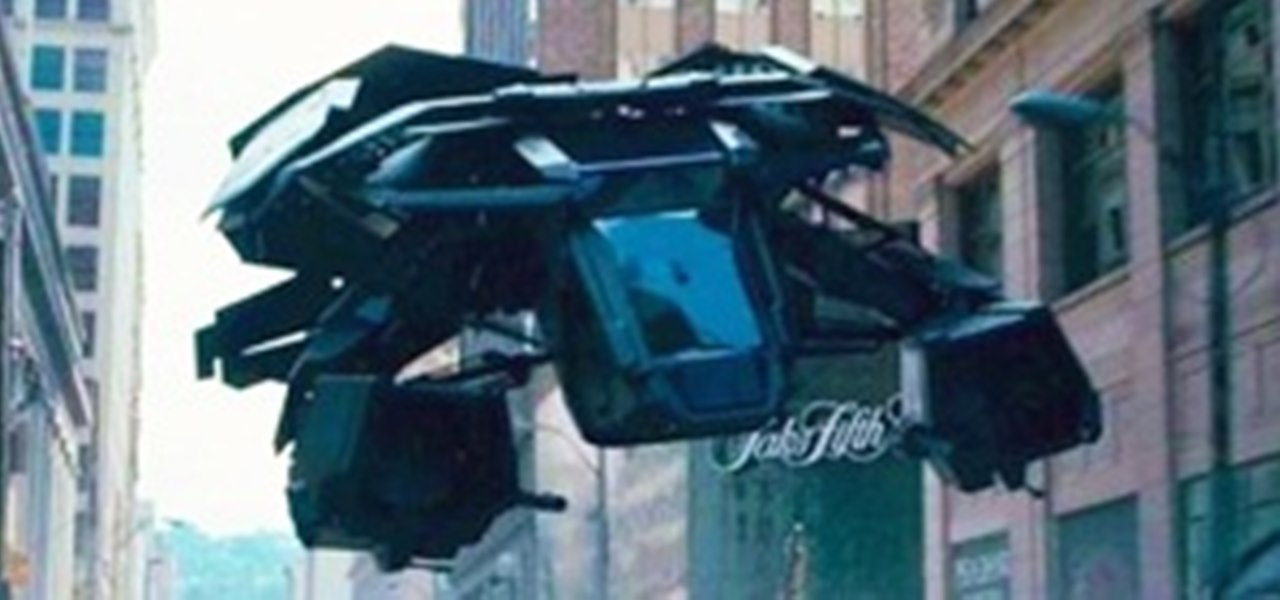



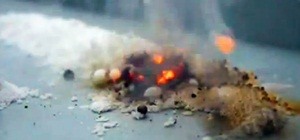
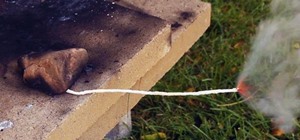



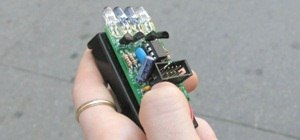



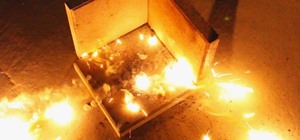
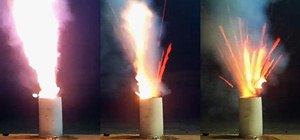
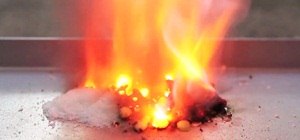







Be the First to Comment
Share Your Thoughts